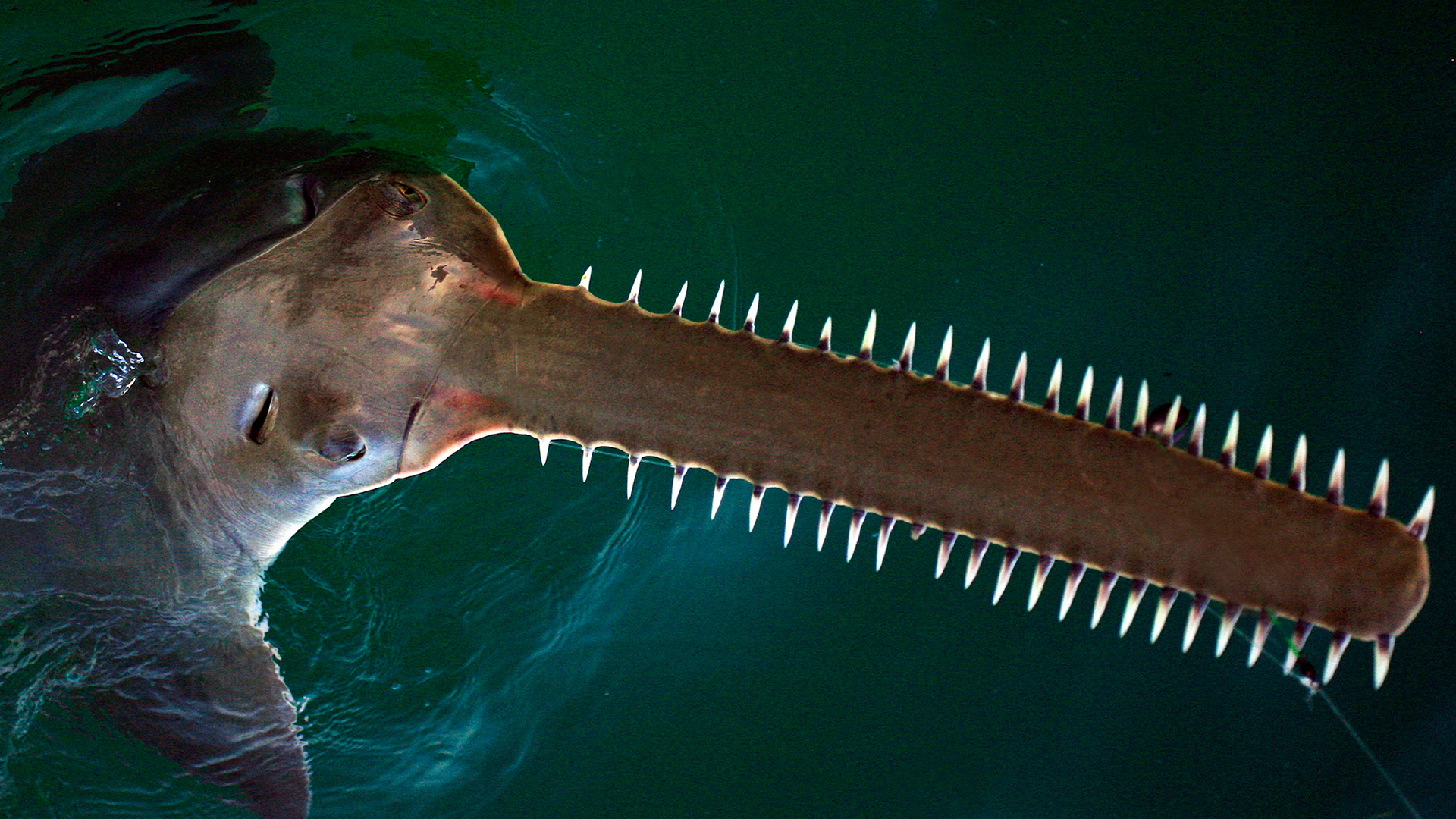Smalltooth sawfish in Florida are spinning and beaching themselves in strange, mystery die-off
Erratically thrashing and whirling smalltooth sawfish are stranding on beaches — and scientists don't know why they're behaving this way.

Endangered smalltooth sawfish in Florida are erratically "spinning and whirling" in shallow waters, causing them to strand themselves and die. The "abnormal fish behavior event" currently defies explanation, scientists say.
"There have been over a hundred unique reports of affected sawfish and now over 30 confirmed mortalities," Adam Brame, the sawfish recovery coordinator at the National Oceanic and Atmospheric Administration (NOAA) Fisheries, told Live Science in an email.
The ongoing mortality event began in October 2023 along the coast of the Florida Keys, and so far 32 smalltooth sawfish (Pristis pectinata) have died, although NOAA officials believe that this is an undercount, according to a statement. Deaths have resulted from sawfish "essentially stranding themselves" on beaches, Brame said.
Footage posted to Facebook on April 1 shows a smalltooth sawfish spinning near the shore.
Water samples didn't reveal any irregularities in water quality or levels of inorganic or organic chemicals. However, tests identified elevated concentrations of dinoflagellates from the genus Gambierdiscus, according to Bonefish & Tarpon Trust.
Related: Largest recorded smalltooth sawfish washes up dead in Florida
Dinoflagellates are microscopic, single-celled algae that can sometimes appear in large concentrations in the water — known as algal blooms. Some algal blooms are harmless, but some algae, including Gambierdiscus species, produce neurotoxins that can be harmful to people and animals in the area.
Get the world’s most fascinating discoveries delivered straight to your inbox.
The behavior is possibly "a neurological response to some kind of an agent," Michael Crosby, president and CEO of the Mote Marine Laboratory and Aquarium, who is collaborating in the emergency response, told CBS news.
Water and tissue samples continue to be tested to discover the cause. The affected sawfish are large juveniles and adults, ranging between 7 and 14 feet (2.1 and 4.2 meters) long.
Historically, smalltooth sawfish lived along the coast of the Americas from the U.S to Brazil, but now they are mainly found in southwestern Florida. The species is critically endangered, according to the International Union for Conservation of Nature Red List of Threatened Species — mainly due to overfishing and habitat destruction.
In October 2023, odd swimming behaviors were first reported in small boned fish species in the region. Locals described fish "showing abnormal swimming behaviors in which they erratically swim in circles or swim upside down," Brame said. "We didn't get a report of a sawfish that was seemingly affected until late January 2024."
Researchers have examined the dead sawfish but found no signs of contagious disease or bacterial infection that could be responsible, according to a statement from the Florida Fish and Wildlife Conservation Commission (FWC), which is leading the investigation.
The smalltooth sawfish "plays a crucial role in the overall ecology of the environment in which they live," Brame said. "We don't definitively know what could happen if sawfish are pushed to extinction but it could have much larger implications for the south Florida ecosystem as a whole," he added.
For affected sawfish, "NOAA and partners have developed a rescue and rehabilitation strategy that will involve attempting to rescue affected sawfish and move them to quarantine facilities to receive around the clock care," Brame said. "The hope is that we can rehabilitate affected sawfish and then release them back to the wild once healthy."

Elise studied marine biology at the University of Portsmouth in the U.K. She has worked as a freelance journalist focusing on the aquatic realm.



